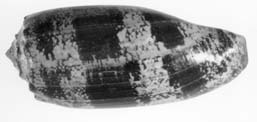Baldomero Olivera
Distinguished Professor of Biological Sciences
Conotoxins, Molecular Neuroscience

Molecular Biology Program
Biological Chemistry Program
Education
B.S. University of the Philippines
Ph.D. California Institute of Technology
Research
Our major research interest is in molecular mechanisms that underlie nervous system function. Recent conceptual advances in defining key molecules important for signaling nervous systems makes it possible to address how multiple molecular components act sequentially or in concert to yield physiological function. To investigate this, we are developing a set of peptide ligands which target specific receptors and ion channel complexes of neurons; these peptides are found in the venoms of the predatory cone snails, Conus. The neurotoxins made by the venomous Conus (“conotoxins”) are small constrained peptides, each having high affinity for a particular receptor target. The major targets are ion channel families; thus, omega and mu conotoxins target Ca channel and Na receptor families, respectively.
The omega conotoxins have proven to be important research reagents for investigating molecular events that take place at synaptic junctions, since they block neurotransmitter release. Their voltage-gated Ca channel targets are the molecular components which transduce electrical signals of axons into the biochemical events at the presynaptic terminus. Different omega conotoxins are specific for different subtypes of voltage-gated Ca channels; one omega conotoxin originally discovered by our laboratory has been approved as a commercial drug for severe pain. Other families of Conus peptides affect the function of voltage-gated K+ channels.
Other classes of peptides from Conus venoms include the conantokins, the first peptide antagonists which target NMDA receptors, a major class of excitatory receptors in the vertebrate central nervous system, and the α-conotoxins, which target nicotinic acetylcholine receptors. Most Conus peptides are apparently specific for a particular subtype. The venom from a single Conus species contains more than 100 biologically active peptides; the ~700 species of Conus have >50,000 different peptides. The long-range goal is to use these toxins as an entrée for studying key molecules in the CNS. The fact that these toxins can be easily synthesized and labeled with reporter groups will permit a functional characterization of the key CNS targets of these peptides.
The precise mechanism that accounts for the biological activity of most biologically active peptides present in Conus venoms has not yet been determined. A major challenge in the next few years is to elucidate the molecular mechanisms through which the different peptides in Conus venom elicit their often striking behavioral effects.

The enclosed list of publications (last 5 years) are selected for being particularly relevant to the HCI mission. Olivera’s lab works on finding non-opioid molecular targets for severe pain, particularly intractable pain that is no longer relieved by morphine or other opioids. The 16 publications are relevant to this work (total number of publications of the lab in the last 5 years, 55). A particularly important direction is work done by our collaborative group on a peptide that appears to prevent neuropathic pain resulting from chemotherapy; potentially, this could not only alleviate neuropathy as a side effect, but could allow a change in the dose and duration of the chemotherapy to make it significantly more effective. The manuscripts that are directly relevant to these developments are marked with an asterisk.
References
-
van Hout M, Valdes A, Christensen SB, Tran PT, Watkins M, Gajewiak J, Jensen AA, Olivera BM, McIntosh JM. (2019) α-Conotoxin VnIB from Conus ventricosus is a potent and selective antagonist of α6β4* nicotinic acetylcholine receptors. Neuropharmacology. 157:107691. doi: 10.1016/j.neuropharm.2019.107691. Epub 2019 Jun 28.
-
**Safavi-Hemami H, Brogan SE, Olivera BM. (2019) Pain therapeutics from cone snail venoms: From Ziconotide to novel non-opioid pathways. J Proteomics. 190:12-20.
-
Memon T, Yarishkin O, Reilly CA, Križaj D, Olivera BM, Teichert RW. (2019) trans-Anethole of Fennel Oil is a Selective and Nonelectrophilic Agonist of the TRPA1 Ion Channel. Mol Pharmacol. 95(4):433-441.
-
Giacobassi MJ, Leavitt LS, Raghuraman, S, Alluri R, Chase K, finol-Urdaneta RK, Terlau H, Teichert RW, Olivera BM. (2019) An integrative approach to the facile functional classification of DRG neuronal subclasses Proc Natl Acad Sci U S A. (in press).
-
**Romero HK, Christensen SB, Di Cesare Mannelli L, Gajewiak J, Ramachandra R, Elmslie KS, Vetter DE, Ghelardini C, Iadonato SP, Mercado JL, Olivera BM, McIntosh JM. (2017) Inhibition of α9α10 nicotinic acetylcholine receptors prevents chemotherapy-induced neuropathic pain. Proc Natl Acad Sci U S A. 114(10)E1825-E1832.
-
Olivera, B.M., H. Safavi-Hemami, Raghuraman S., Teichert R.W. (2017) Cone Snail Venom Peptides and Future Biomedical Applications of Natural Products In Chemical Biology of Natural Products. Editors: Newman, Cragg.
-
Memon T, Chase K, Leavitt LS, Olivera BM, Teichert RW. (2017) TRPA1 expression levels and excitability brake by KV channels influence cold sensitivity of TRPA1-expressing neurons. Neuroscience. 353:76-86.
-
Green BR & Olivera BM. (2016) Venom Peptides from Cone Snails: Pharmacological Probes for Voltage-gated Sodium Channels. In R. French, S. Noskov CTM 78 Na Channels Across Phyla and Function. Chennai, India: Elsevier. 78:65-86.
-
Green BR, Gajewiak J, Chhabra S, Skalicky JJ, Zhang MM, Rivier JE, Bulaj G, Olivera BM, Yoshikami D, Norton RS. (2016) Structural Basis for the Inhibition of Voltage-gated Sodium Channels by Conotoxin μO§-GVIIJ. J Biol Chem. 291(13):7205-20.
-
Zhang MM, Gajewiak J, Azam L, Bulaj G, Olivera BM, Yoshikami D. (2015) Probing the Redox States of Sodium Channel Cysteines at the Binding Site of μO§-Conotoxin GVIIJ. Biochemistry. 54(25):3911-20.
-
Wilson, M. J., M. M. Zhang, J. Gajewiak, L. Azam, J. E. Rivier, B. M. Olivera, and D. Yoshikami. (2015) α- And β-subunit composition of voltage-gated sodium channels investigated with μ-conotoxins and the recently discovered μO§-conotoxin GVIIJ. J Neurophysiol 113(7):2289-2301.
-
Teichert, R. W.; Schmidt, E. W.; Olivera, B. M., (2015) Constellation Pharmacology: A new paradigm for drug discovery. Ann. Rev. Pharmacology and Toxicology, (55)573-589.
-
Teichert, R. W.; Olivera, B. M.; McIntosh, J. M.; Bulaj, G.; Horvath, M. P. (2015) The Molecular Diversity of Conoidean Venom Peptides and their Targets: From Basic Research to Therapeutic Applications In Venom to Drugs: Venom as a Source for the Development of Human Therapeutics. King, G. F., Ed. RSC Publishing: London, Vol. RSC Drug Discovery, pp 163-203.
-
Lee, H. K., L. Zhang, M. D. Smith, A. Walewska, N. A. Vellore, R. Baron, J. M. McIntosh, H. S. White, B. M. Olivera, and G. Bulaj. (2015) A marine analgesic peptide, Contulakin-G, and neurotensin are distinct agonists for neurotensin receptors: uncovering structural determinants of desensitization properties. Front Pharmacol 6:11.
-
Christensen SB, Bandyopadhyay PK, Olivera BM, McIntosh JM. (2015) αS-conotoxin GVIIIB potently and selectively blocks α9α10 nicotinic acetylcholine receptors. Biochem Pharmacol. 96(4):349-56.
-
Raghuraman, S., Garcia, A., III, Anderson, T., Twede, V., Curtice, K.J., Ramirez, J.-M., Olivera, B.M., and Teichert, R.W. (2014) Defining modulatory inputs into CNS neuronal subclasses through functional pharmacological profiling, PNAS 111(17):6449-54.
-
Olivera, B.M., Showers Corneli, P., Watkins, M., and Fedosov, A. (2014). Biodiversity of Cone Snails and other Venomous Marine Gastropods: Evolutionary Success Through Neuropharmacology., Annual Review of Animal Biosciences 2:487 -513.
-
Teichert RW, Memon T, Aman JW, Olivera BM. (2014) Using Constellation Pharmacology to define comprehensively a somatosensory neuronal subclass. Proc. Natl. Acad. Sci. USA, 111(6): 2319-24.
-
Aman JW, Imperial JS, Ueberheide B, Zhang MM, Aguilar M, Taylor D, Watkins M, Yoshikami D, Showers-Corneli P, Safavi-Hemami H, Biggs J, Teichert RW, Olivera BM. (2015) Insights into the origins of fish hunting in venomous cone snails from studies of Conus tessulatus. Proc. Natl. Acad. Sci. USA, 112(16): 5087-92.
-
Safavi-Hemami H, Gajewiak J, Karanth S, Robinson SD, Ueberheide B, Douglass AD, Schlegel A, Imperial JS, Watkins M, Bandyopadhyay PK, Yandell M, Li Q, Purcell AW, Norton RS, Ellgaard L, Olivera BM. (2015) Specialized insulin is used for chemical warfare by fish-hunting cone snails. Proc. Natl. Acad. Sci. USA, 112(6): 1743-8.
-
Bandyopadhyay PK, Stevenson BJ, Ownb JP, Cady MT, Watkins M, Olivera BM. (2008) The mitochondrial genome of Conus textile, coxI-coxII intergenic sequences and Conoidean evolution. Mol Phylogenet Evol, 46(1): 215-223.
-
Olivera BM, Quik M, Vincler M, McIntosh JM. (2008) Subtype-selective conopeptides targeted to nicotinic receptors: Concerted discovery and biomedical applications. Channels (Austin) 2(2): 143-152.
-
Olivera BM, Teichert RW. (2007) Diversity of the Neurotoxic Conus Peptides. Molecular Interventions, 7(5): 251-260.
-
Buczek O, Yoshikami D, Bulaj G, Jimenez EC, Olivera BM. (2005) Posttranslational amino acid isomerization: a functionally important D-amino acid in an excitatory peptide. J. Biol. Chem, 280: 4247-53.
-
Terlau H, Olivera BM. (2004) Conus venoms: a rich source of novel ion channel-targeted peptides. Physiol. Rev, 84: 41-68.
-
Bulaj G, Buczek O, Goodsell I, Jimenez EC, Jranski J, Garrett, JE, Olivera BM. (2003) Efficient oxidative folding of conotoxins and the radiation of venomous cone snails. Proc. Natl. Acad. Sci. USA, 100 (supp 2): 14562-69.
-
Bandyopadhyay PK, Garrett JE, Shetty RP, Keate T, Walker CS, Olivera BM. (2002) g -Glutamyl carboxylation: an extracellular posttranslational modification that antedates the divergence of molluscs, arthropods and chordates. Proc. Natl. Acad. Sci. USA, 99: 1264-1269.
-
Olivera BM. (2000) ω-Conotoxin MVIIA: from marine snail venom to analgesic drug. In Drugs from the Sea (Fusetani N, ed), Basel, Karger, 75-85.
-
England LJ, Imperial J, Jacobsen R, Craig AG, Gulyas J, Akhtar M, Rivier J, Julius D, Olivera BM. (1998) Inactivation of a serotonin-gated ion channel by a polypeptide toxin from marine snails. Science, 281: 575-578.
